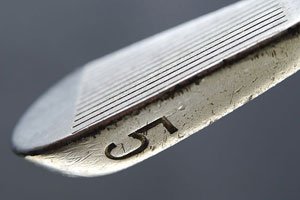When most of us were kids the idea of a car seat for children
over three or four seemed silly. And seatbelts? Who needed
seatbelts? My parents actually got in fights over their use: Mom
wanted me strapped in for every ride while Dad was so opposed to
them he cut the belts out of his Chevy.
When most of us were kids the idea of a car seat for children over three or four seemed silly. And seatbelts? Who needed seatbelts? My parents actually got in fights over their use: Mom wanted me strapped in for every ride while Dad was so opposed to them he cut the belts out of his Chevy.
Times have changed dramatically. Car accidents are the leading cause of death for children from 1-year-old to 14 on the national level, according to the Centers for Disease Control. And in the state of California a litany of laws have been put on the books to protect young passengers. Children must ride in a rear-facing car seat until they are 1-year-old and more than 20 pounds.
By law, they’re also required to ride in a child safety seat until they are 6-years-old and 60+ pounds. (Many other states now require them until kids reach 8 and weigh at least 80 pounds, and beginning next year all California kids under 12 will be required to ride in the back seat.)
Even if you’re using a safety seat, your children could still be in for serious injuries if theirs is not installed properly. Cars differ depending on make, model and age. Newer cars have additional stabilizing safety features like tether bolts and LATCH systems. Pre-2000 models require safety belt installations. Follow manufacturer guidelines, but remember some things aren’t written on the box. A few tips for parents:
nNot every safety seat is right for your car. The size, shape and angle of your seats may determine which safety seat you buy. California Highway Patrol Officer Terry Mayes, a credentialed child safety seat instructor, installed a demonstration model in my car. The seat was far too large for my 1991 Toyota to accommodate. The seat angle had to be corrected with a rolled up beach towel and with the driver’s seat all the way back (I’m rather tall) the safety seat touched mine. This doesn’t give the child’s seat room to flex, a dangerous no-no.
nHarnessing is key. Many parents are afraid of hurting their baby by making the harness too tight. Remember this, said Mayes: “That baby just came through the birth canal. Loose harness straps cannot secure them.” For infants in rear-facing seats, harness straps should always be at or below their shoulders. Do not bundle a baby before buckling them in. Instead, attach buckles over their regular clothing and put blankets on top. Front-facing children’s seats, straps should be at or above the shoulder level. It’s time to buy a bigger seat if your child’s ears reach the top of their current one.
nSafety has five points. Older children’s seats may have what’s called a T-shield or a tray-shield, a molded plastic strap or bar that was supposed to help stop a child. Their harnesses only contained three straps rather than today’s standard five (two extra straps disperse force over the hips as well). If you have a seat like this, trash it. Many have been recalled and pose added risk to your child. Older kids in booster seats are fine with a correctly adjusted three-point seatbelt like those worn by adults.
nMight makes right … sometimes. The biggest mistake parents make in installing their own car seats is not getting the seatbelt tight enough. Use a knee to depress the child’s seat while you tighten the car’s seat belt. The softer your seats, the more give they will have in an accident, and the harder a car seat is to secure – so this is not a one-person job. Be sure to install a seat-locking clamp to hold belt straps parallel. If possible, make sure there are no twists in the belt and seats are anchored to the rear center position.
There are too many technical factors in car seat installation to discuss here, so see a professional. The nearest inspection site credentialed by the National Highway Traffic Safety Administration is the Hollister-Gilroy CHP station at 740 Renz Lane, Gilroy (behind Lowes).
Officers will evaluate and demonstrate proper installation as well as make recommendations for any necessary changes. You can stay informed by visiting the National Highway Traffic Safety Administration’s Web site (www.nhtsa.dot.gov) to periodically check on recall notices, too.











